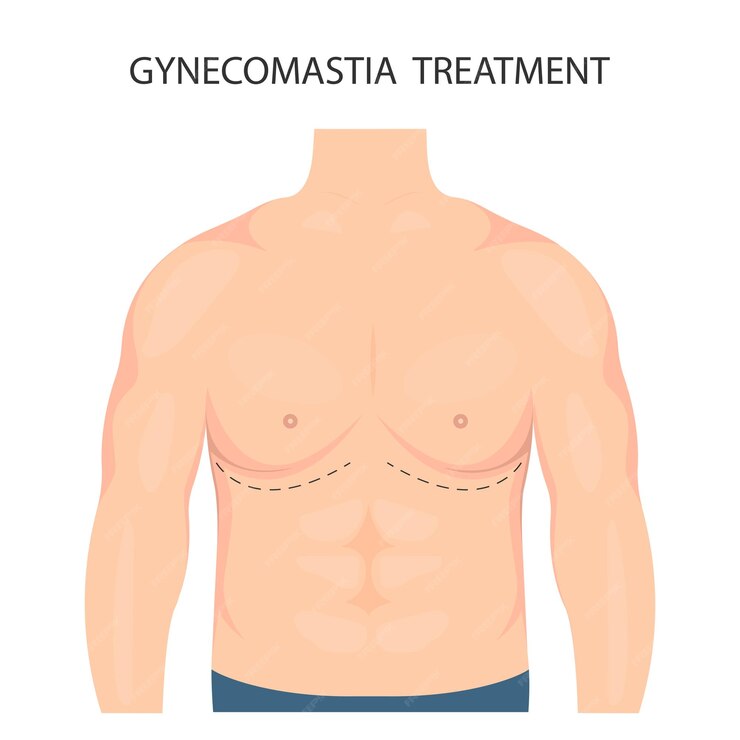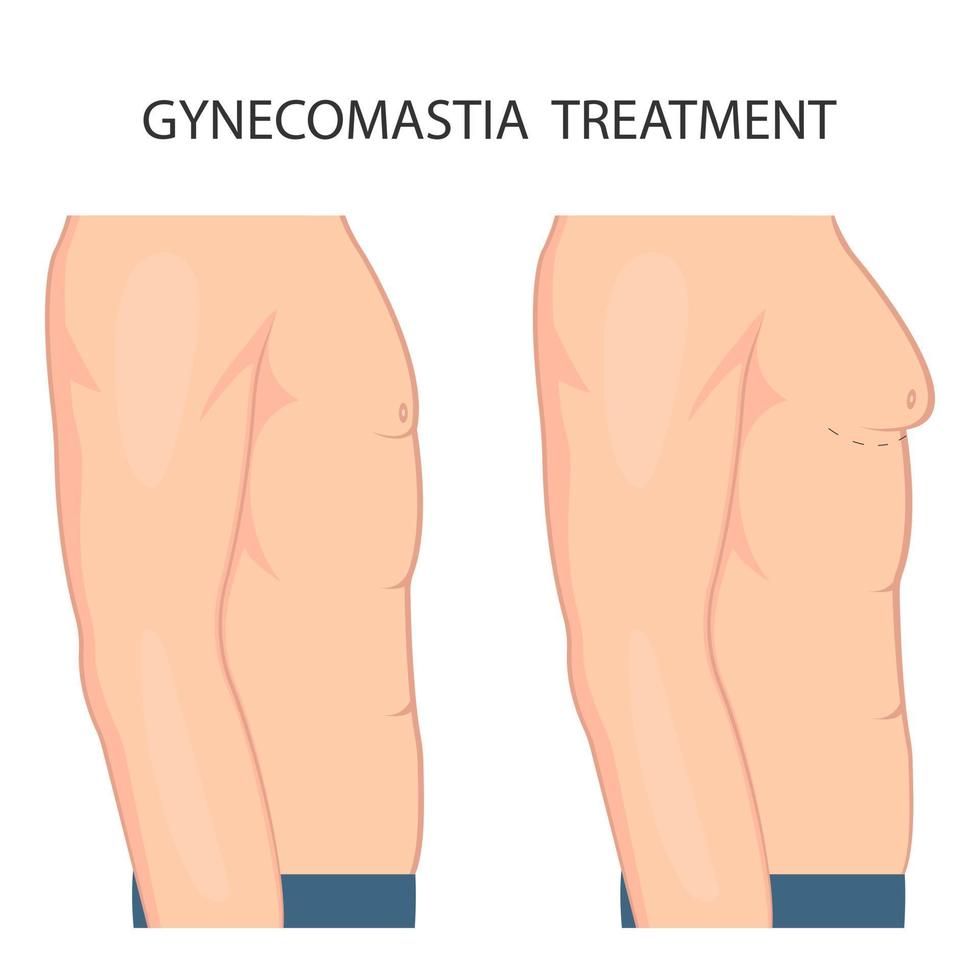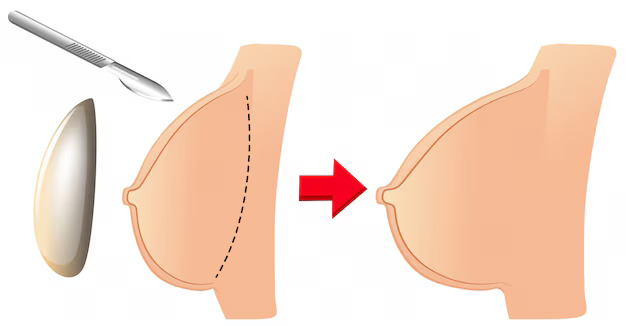What is Gynecomastia?
Gynecomastia is the development of excess breast tissue in males, leading to the appearance of enlarged breasts. It can occur at any age but is most common during puberty and in older men. Gynecomastia can affect one or both breasts and is often characterized by firm, rubbery tissue beneath the nipple area.

Causes of Gynecomastia:
- Hormonal Imbalance: Fluctuations in hormone levels, particularly an imbalance between estrogen (female hormone) and testosterone (male hormone), can trigger gynecomastia. This imbalance can occur during puberty, as well as with aging, certain medications, or medical conditions affecting hormone production.
- Medications: Some medications, such as certain antidepressants, anti-anxiety drugs, and medications used to treat prostate conditions or cancer, can cause gynecomastia as a side effect.
- Health Conditions: Certain health conditions, including obesity, liver disease, kidney failure, and thyroid disorders, can disrupt hormone levels and contribute to gynecomastia.
- Lifestyle Factors: Factors such as excessive alcohol consumption, illicit drug use (including anabolic steroids and marijuana), and certain herbal supplements can increase the risk of gynecomastia.
Before Gynecomastia Surgery
Before undergoing gynecomastia surgery, it’s essential to consult with a board-certified plastic surgeon specializing in male breast reduction. During the consultation, your surgeon will assess your medical history, conduct a physical examination, and discuss your goals and expectations for surgery.
Diagnostic tests, such as blood tests or imaging studies, may be ordered to evaluate underlying causes of gynecomastia and ensure you are a suitable candidate for surgery. Your surgeon will explain the surgical techniques, potential risks, and expected outcomes, allowing you to make an informed decision.
Preparing for Gynecomastia Surgery:
- Discontinuing certain medications that can increase the risk of bleeding or interfere with anesthesia.
- Avoiding smoking and alcohol consumption before surgery to optimize healing and reduce complications.
- Arranging for transportation to and from the surgical facility on the day of the procedure.
- Following any pre-operative instructions provided by your surgeon, such as fasting guidelines or skincare protocols.
During Gynecomastia Surgery:
Gynecomastia surgery is typically performed under general anesthesia on an outpatient basis, meaning you can return home the same day. The surgical technique employed depends on the type and severity of gynecomastia:
- Liposuction: In cases where gynecomastia is primarily due to excess fatty tissue, liposuction may be used to remove fat deposits through small incisions.
- Surgical Excision: If glandular tissue is the primary cause of gynecomastia, surgical excision may be necessary to remove the excess tissue and reshape the chest contour.
Your surgeon will determine the most appropriate approach based on your individual needs and anatomy. The duration of surgery varies but typically ranges from one to three hours.
After Gynecomastia Surgery:
Following gynecomastia surgery, you will be monitored in a recovery area until the effects of anesthesia wear off. You may experience some discomfort, swelling, and bruising in the chest area, which can be managed with pain medication and compression garments provided by your surgeon.
It’s important to follow your surgeon’s post-operative instructions, which may include:
- Taking prescribed medications as directed.
- Wearing compression garments to minimize swelling and support healing.
- Avoiding strenuous activities and heavy lifting for a specified period.
- Attending follow-up appointments for wound checks and progress assessments.
Results of gynecomastia surgery are typically visible immediately, with final outcomes becoming apparent as swelling subsides and tissues settle. Most patients experience a significant improvement in chest contour and self-confidence, with scars fading over time.
Conclusion:
Gynecomastia surgery offers a permanent solution for men seeking to address the physical and emotional challenges associated with enlarged breast tissue. By understanding the causes of gynecomastia and what to expect before, during, and after surgery, individuals can make informed decisions and achieve their desired outcomes.
If you’re considering gynecomastia surgery, consult with a qualified plastic surgeon to discuss your options and develop a personalized treatment plan. With proper preparation, skilled surgical technique, and attentive post-operative care, you can enjoy a smoother, more masculine chest contour and improved quality of life.






very informative Blog